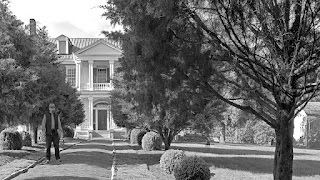May 15, 2012
Carnton Plantation | Nashville
Carnton was built in 1826 by former Nashville mayor Randal McGavock (1768-1843). Throughout the nineteenth century it was frequently visited by those shaping Tennessee and American history, including President Andrew Jackson.
Beginning at 4 p.m. on November 30, 1864, Carnton was witness to one of the bloodiest battles of the entire Civil War. The battle, believed to be the bloodiest five hours of the Civil War, involved a massive frontal assault larger than Pickett's Charge at Gettysburg.
A staff officer later wrote that "the wounded, in hundreds, were brought to [the house] during the battle, and all the night after. And when the noble old house could hold no more, the yard was appropriated until the wounded and dead filled that...."
On the morning of December 1, 1864 the bodies of four Confederate generals killed during the fighting, Patrick R. Cleburne, Hiram B. Granbury, John Adams, and Otho F. Strahl, lay on Carnton’s back porch. The floors of the restored home are still stained with the blood of the men who were treated here.
In early 1866, John and Carrie McGavock designated two acres of land adjacent to their family cemetery as a final burial place for nearly 1,500 Confederate soldiers killed during the Battle of Franklin. The McGavocks maintained the cemetery until their respective deaths.
Today, the McGavock Confederate Cemetery is a lasting memorial honoring those fallen soldiers and the Battle of Franklin. It is the largest privately owned military cemetery in the nation.
[Source: http://www.carnton.org/carnton_history.htm]



































































